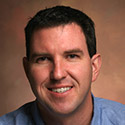|
|
|
Contributors | Messages | Polls | Resources |
|
Level 3's Saenger: SDN Takes a Village Talent is a top priority for enterprise customers deploying SDN solutions, says Adam Saenger, vice president of global product developments and management at Level 3 Communications. For Saenger, this means both attracting well-rounded talent and keeping that talent happy -- and, as a network carrier, listening carefully to the customers who employ such talent. Saenger previously spoke with Telco Transformation in a two-part Q&A covering enterprise cloud and cloud virtualization. Telco Transformation touched base with Saenger again to get his take on the opportunities and challenges in the SDN market today. In Part 1 of this three-part Q&A -- edited for length and clarity -- Saenger talks about talent demands in the age of software-defined networking and listening to SDN customers. In Parts II and III, look for Saenger to discuss what it takes to get started with SDN the right way. Telco Transformation: The last time we spoke, we talked about the skills that were in demand for the enterprise-cloud environment. (See: Level 3's Saenger: Enterprise Cloud Means Business.) Building on that conversation, what are the skill sets and talent profiles in demand, or coming into demand, in the software-defined networking space? AS: I would say the combination of software and networking in and of itself creates a newer skill set because it requires that the organization look across industries and to mold together really disparate talent pools. That is the challenge of organizations today and it's one that both the service provider industry and our enterprises are dealing with.
TT: So this is the old "talent shortage in IT" song and dance, kind of? (See Lack of Skilled Employees a Hurdle for Carriers.) AS: Kind of. As I look into our own organization and how we solve for this, we actually have a couple different organizations that all work very closely together to be that glue of "OK, so how do we evolve this SDX solution?" And so if I look at your traditional architecture and engineering teams, your traditional IT teams, and a group that we've implemented to help guide those organizations' network software development -- it's a network software development team, the "NSD" team. [That team] helps to guide those organizations under the premise that the marketing organization is out listening to and talking to our customers and how they're evolving their networks so that we can ensure the right talent is being brought on board and the right vision is being executed upon. TT: It sounds like what you're describing is that you're keeping your ear to the train tracks to learn what all of your customers are doing with what you're selling them -- kind of like crowd sourcing to find the best solutions -- so you can share these best practices among all of your customers? Do I have that right? AS: I would say mostly. It's more than just putting our ear to the tracks. I would say we're riding on the train with our customers. We're going through our own digital transformation, and so we're putting ourselves into our customers' shoes to feel what that transformation looks like and to guide our own organization, but also to understand how this transformation is affecting our customers' business. And honestly, all too often what I've seen historically is that service providers have been a spectator of the enterprise, which hasn't served the purpose of a true customer-centric organization. Secondly, we look to the employee experience of the delivery and support of any service because there is a high correlation between employee satisfaction and customer satisfaction. If you can look to your employees to be walking -- or, in that last analogy, riding on the same train -- as your customers, you're going to have a much higher degree of success. TT: Continuing this line of thought, how has Level 3's own perspective evolved and changed on SDN over the past, say, two or three years? Where were you, where are you now and what has that journey been like? AS: It's been fun, it's been challenging and it's been rewarding. We're just on the early stages of that journey. We are truly reaping the rewards -- as an industry and for our customers – and the benefits of what adaptive networking can provide. — Joe Stanganelli, Contributing Writer, Telco Transformation |
In part two of this Q&A, the carrier's group head of network virtualization, SDN and NFV calls on vendors to move faster and lead the cloudification charge.
It's time to focus on cloudification instead, Fran Heeran, the group head of Network Virtualization, SDN and NFV at Vodafone, says.
5G must coexist with LTE, 3G and a host of technologies that will ride on top of it, says Arnaud Vamparys, Orange Network Labs' senior vice president for radio networks.
The OpenStack Foundation's Ildiko Vancsa suggests that 5G readiness means never abandoning telco applications and infrastructures once they're 'cloudy enough.'
IDC's John Delaney talks about how telecom CIOs are addressing the relationship between 5G, automation and virtualization, while cautioning that they might be forgetting the basics.
 On-the-Air Thursdays Digital Audio On-the-Air Thursdays Digital AudioARCHIVED | December 7, 2017, 12pm EST
Orange has been one of the leading proponents of SDN and NFV. In this Telco Transformation radio show, Orange's John Isch provides some perspective on his company's NFV/SDN journey.
 Special Huawei Video Special Huawei VideoHuawei Network Transformation Seminar The adoption of virtualization technology and cloud architectures by telecom network operators is now well underway but there is still a long way to go before the transition to an era of Network Functions Cloudification (NFC) is complete. |
|
|
|
||


















